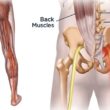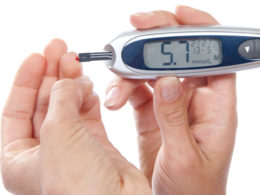Working out takes a lot of commitment and dedication before you see the results you’re hoping for. No one sees the effects of exercising after just one intense session at the gym. It takes patience, and you definitely need to know what you’re doing first before you get into it. If you’ve just begun working out, you’ll hear a lot of workout mottos that you’ll soon realize are not actually true. These claims usually originate from well-intentioned sayings that have diverged from the truth. So before you settle on a routine that will not give you your desired effects in the long run, take note of and avoid these five exercising myths that are not true.
1. Stretch Before Exercising to Prevent Injury
You always hear people say how important it is to stretch before exercising so as to prepare the body for the workout it’s about to get, thereby reducing the risk of injuries and muscle soreness. The intention of this saying is actually true but the term “stretching” was confused with “warming up.” It is very important to warm up before exercising in order to prevent injury but studies show that stretching does not really have anything close to the same effect. Yes, you can include stretching when you warm up but doing stretches alone is not an effective way to prevent injuries after a strenuous workout.
2. No pain, no gain
Working out should be challenging but never to the point of pain. It is important to keep pushing yourself and to increase your endurance with every exercise but you should never exercise at the level of pain. Discomfort or soreness during and after working out is alright, especially for beginners, but muscle pain usually suggests an injury. You should exercise smarter instead of harder. If you push yourself too hard that you’re experiencing pain, then this is a definite sign that you should stop.
3. You can target a spot to burn fat
You may have done so many crunches or lifted heavy weights thinking that doing so alone would get rid of the fat in the area. Unfortunately, this is not the case. You may already have the muscle definition you’re hoping for but you wouldn’t be able to know since you can’t actually see it underneath the layer of fat. You can’t choose an area to burn fat. Instead, include cardiovascular and strength-training workouts in your routine in order to decrease your overall body fat content. This would get rid of the fat resting on top of your muscles thereby allowing you to see your tight abs or toned arms.
4. The more you sweat, the more you burn
People have always correlated sweating with the calories you burn or with how hard you’ve worked out. This is not always true. Sweating is just the body’s natural way of cooling itself by regulating your internal body temperature. The amount you sweat could be just as related to your genetics, the studio or gym’s temperature, or the weather, as it is to the intensity that you’ve worked out. Thus, this means that you can actually burn a significant amount of calories without sweating that much. For instance, walking or light weight training burns a lot of calories minus the sweat drenched clothes.
5. Your weight determines the effects
More often than not, when people start working out, they weigh themselves very so often or even every day. And after weeks of working out without any loss in weight, they immediately jump to the conclusion that they are not accomplishing anything and might even decide to stop. Weight is not the measurement for fitness. Although they may not see it, constant exercise improves one’s health in various ways even though there’s no significant decrease in weight.









